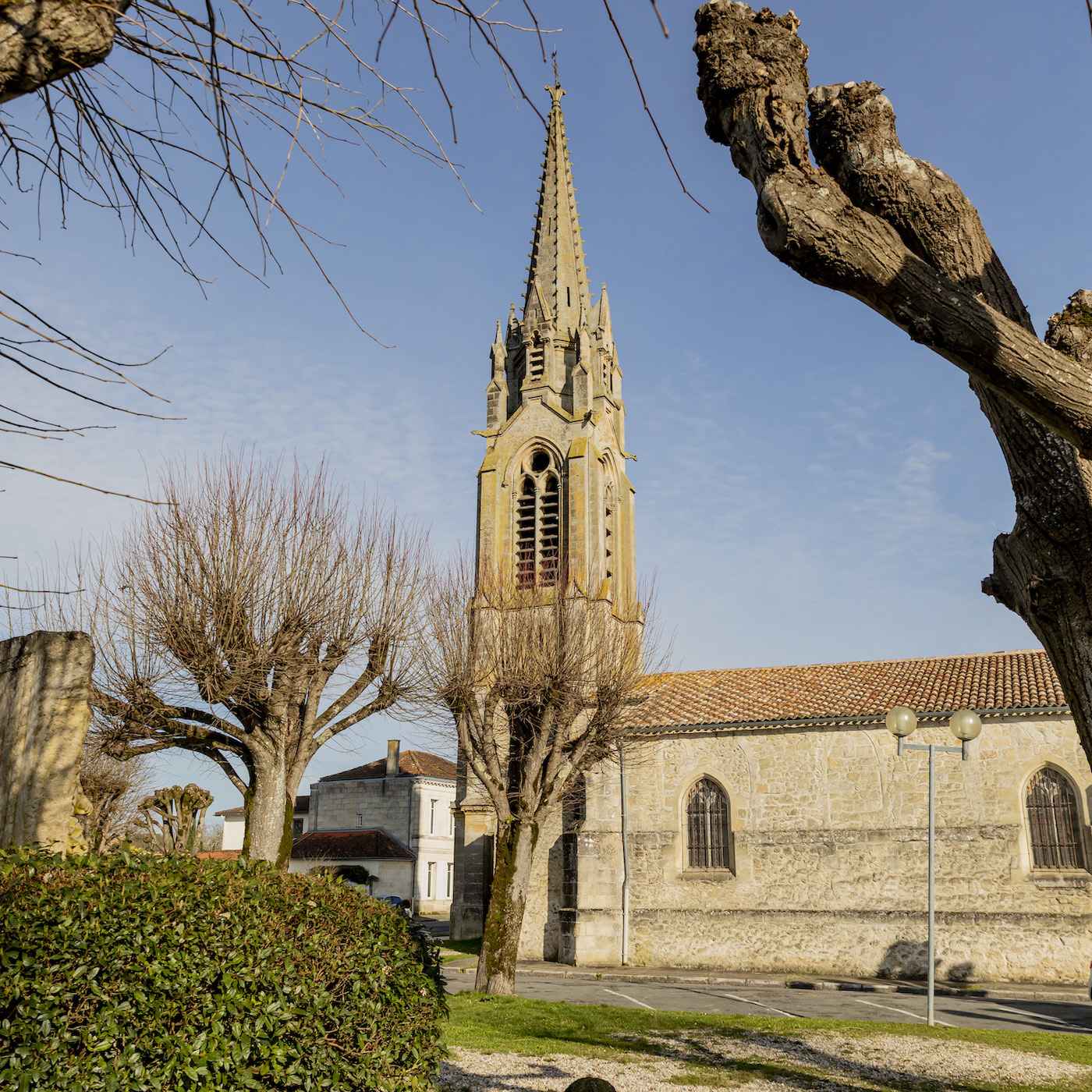
Camblanes-et-Meynac
History of Camblanes-et-Meynac
On the right bank of the Garonne, south-east of Bordeaux, the territory of Camblanes-et-Meynac has gradually become urbanized from the ancient domains of Camulus and Moenius. Already covered with vines in the 2nd century, this territory stretches to the banks of the Garonne at Port Neuf, where ancient coins were taken out of the river: they are today exhibited at the Aquitaine museum under the name of "Trésor de Garonne". The history of the village has been turbulent during modern times: during the sling of 1649, it was violently attacked by the troops of the Duke of Epernon who left only a dozen survivors. In 1804, the two towns of Camblanes and Meynac merged to form the current name. The dominant activities of Camblanes-et-Meynac were for two centuries viticulture and the exploitation of stone quarries. The territory has had up to 20 quarries, which are now closed. However, its landscape is still marked by the fame of the Cadillac-Côtes de Bordeaux appellation wines. Municipality of less than 1000 inhabitants until the 1950s, Camblanes-et-Meynac has seen its attractiveness increase exponentially for half a century, until today there are 3000 inhabitants.
The must-sees of Camblanes-et-Meynac
Camblanes-et-Meynac charms its visitors and its residents with a remarkably preserved heritage that bears witness to a continuous history from antiquity to modern times. From the Gallo-Roman mosaic found under the foundations of the church to the wine châteaux and beautiful mansions built in the 18th and 19th century by wine merchants from the Port de la Lune, Camblanes-et-Meynac is rich in invaluable historical treasures. , cultural and architectural. Among the monuments of which the town can be proud is the church of Sainte-Eulalie built in the 15th century, in the bell tower of which the inhabitants attacked during the sling of 1649 took refuge. On the side of the old village of Meynac, the chapel Saint-Pantaléon dates from the 11th century and houses 16th century murals. The cruel Duke of Epernon, favorite of Henri IV, sadly marked the history of the village and more broadly of the Gironde: the Château Lagarette, Renaissance building in the middle of the vineyards, shelters a unique fresco of its kind which traces the terrible assault he launched in the 17th century on the village. A small rural heritage is finally to be discovered over the walks, hikes and bike rides: it is cross roads, washhouses or even a Calvary that draw the rural and authentic decor of the town.
Living in Camblanes-et-Meynac
Just 13 km from Bordeaux, Camblanes-et-Meynac is the promise of a quiet and restful life in the countryside while enjoying prized accessibility to the Girondine capital. Saint-Jean station and the city center can be reached in 15 to 20 minutes by the D113 then by the François-Mitterrand bridge. Bus line 403 takes you directly to Place Stalingrad along the Garonne. The town itself has many amenities for families, including a nursery school, an elementary school, a leisure center, a teen club and a nature club. Camblanes-et-Meynac also has a media library, a game library and a music school. Only a few minutes from cinemas and theaters in Bordeaux, the town nevertheless has its own very dynamic cultural life. Each year, a wine festival celebrates local viticulture and regional products. Sports enthusiasts can practice football, tennis, badminton, running, gymnastics, skateboarding, Kung fu and dance in a club. Finally, the landscapes of the town are ideal for bike rides and hikes.